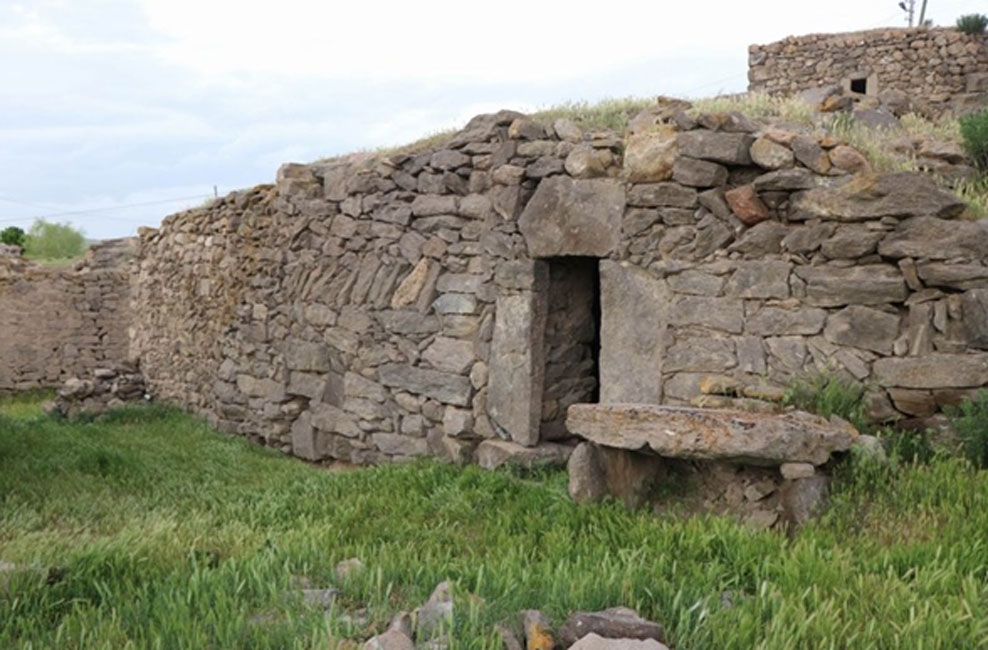3,500-Year-Old Hittite Hieroglyphs Discovered In Anatolian Cattle Barn
Archaeologists digging in the Gülşehir district of central Nevşehir province in Turkey's historical Cappadocia region have discovered 3,500-year-old Hittite hieroglyphs built into the walls of a barn which will greatly add to our understanding of this spectacular ancient kingdom. In this article, we will have a go at identifying these mysterious and deeply ancient symbols.
The Discovery of the Carved Stones
The region of Cappadocia in central Turkey boasts one of the most surreal and spectacular landscapes in the world and was perfectly described in a recent Ancient Origins article as consisting of “deep valleys and soaring rock formations dotted with homes, chapels, tombs, temples, and entire subterranean cities harmoniously carved into the natural landforms.”

Cappadocia – city where the barn carvings were discovered. (olezzo / Adobe)
With over one hundred square miles consisting of 200 underground villages and tunnel towns complete with hidden passages, secret rooms, and ancient temples, Cappadocia remains one of the world’s largest ancient cave-dwelling regions.
The head of excavations, Professor Yücel Şenyurt, told reporters at Daily Sabah that the “invaluable hieroglyphs are from the Tabal Kingdom” which appeared following the downfall of the Hittite Empire, in South Central Anatolia, for reasons unknown, about 1180 BC.
Tabal and its people are often identified with the tribe of the Tibareni (Thobeles in Josephus) who lived near the Black Sea, and the discovery, according to Professor Şenyurt, “will greatly contribute to shedding light on the history of the Neo-Hittite kingdom.”
The barn had been used for keeping cattle but was immediately placed under protection by officials after they were notified of the ancient artifacts, which will now be transferred by expert stonemasons to Nevşehir Museum Directorate for further research.

The carvings were found in a barn that had been used for cattle. (Yücel Şenyurt / Fair Use)
Legacy Of The Barn Carvings
To understand the culture of the Tabal Kingdom we must look to their predecessors, the Hittites. Ancient History Encyclopedia informs us that “Little was known of the Hittites other than the references from the Bible and fragmentary documentation from Egypt until the late 19th century AD when excavations began at Boghaskoy (modern-day Bogazkale, Turkey) which was once the site of Hattusa, capital of the Hittite Empire.”
This expansive fortress-city sprawls over the rocky terrain consisting of craggy citadels and elaborate temples and it became the center of a powerful empire that would not only dominate most of Anatolia but would grow and extended into Syria and the Levant.
- Exploring an Ancient and Undeciphered Language: Eteocypriot and the Amathus Bilingual Inscription
- Would you enjoy this 4,000-year-old Hittite feast?
- Egyptian Hieroglyphs: The Language of the Gods

This expansive fortress-city of Cappadocia, Turkey. (CillanXC / CC BY-SA 3.0)
The Hittites were extensive traders with excellent ironworking skills which they began applying to the production of tools and weapons from around 1400 BC. The Hittites were deeply religious and developed a wide range of artistic and spiritualized objects from metal and pottery, like for example, tiny cylinder seals from precious stones that served as official signatures for contracts and deeds. A Study.com article tells us that above all other defining factors, Hittites excelled at creating relief sculptures of kings, animals, and battle chariots, where they carved figures ‘out of’ solid stone surfaces.
Scribbles In Stone
The state religion of the Hittites was nature-worship and the ‘weather-god’ and the ‘sun-goddess’ were chiefs of an incredibly long list of minor gods representing elements and aspects of natural forces and objects, invoked and referred to as “the thousand gods of Hatti” in state documents and treaties. A common relief was that of the God of War which is found carved onto the King's Gate at Hattusa (now in the Museum of Anatolian Civilizations, Ankara).
A research article about Hittite arts says, “In general, however, Hittite artistic creativity in art, while strong, simple, and forthright, is undistinguished in technique and limited in imagination. Its character, however, is unmistakable.”
Dated to the second half of the 8th century BC the incredible Topada Inscription is a ‘Neo-Hittite period’ hieroglyphic Luwian rock inscription situated near the Ağıllı village of Acıgöl (formerly Topada) in Nevşehir province. Inscribed on the massive flattened surface of a rock that juts out from a 16.4 feet (5 meters) high plateau; 8 lines of data are separated by drawn lines and it begins: “Great King Wasusarma, the Hero, son of the Great King Tuwati, the Hero” and tells of his fight against the city of Parzuta.

Neo-Hittite rock inscription of Topada with Luwian hieroglyphs, 2nd half of the 8th century BC, Turkey. (Butko / CC BY-SA 2.0)
Now, while the Topada Inscription is a ‘Neo-Hittite period’ art work, it was executed 900 years after the carved stones discovered in the barn. However, conceptual languages like this one change little over time and most often they maintain their underlying structure.
This is why when we compare the newly discovered ‘barn stones’, with the Topada Inscription, matching symbols and geometries can quickly be established. For example, the following section of the inscription perfectly matches one of the stones found in the barn; they are both double-lined ‘D’ shapes butting against double vertical lines.

Sampling of the ancient barn carvings recently discovered in Turkey. (Yücel Şenyurt)
There is a high chance that your next fifteen minutes will be occupied, and while you compare the shapes looking for comparisons, be mildly conscious that a team of scientists, sometime over the next year, will be paid very handsomely for doing pretty much what you are doing. That is, making a comparative analysis of symbol groups from different eras within the ‘Neo-Hittite period’, to expand one’s understanding of this fascinating civilization.
Top image: Site of discovery of ancient barn carvings . Source: Yücel Şenyurt / Fair Use.
By Ashley Cowie


















Comments
Maybe history will be kind and finally reveal exactly what happened during the bronze age collapse other than scant writings about "sea people"